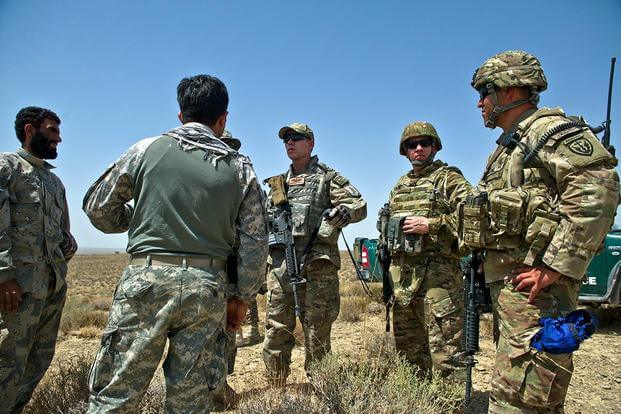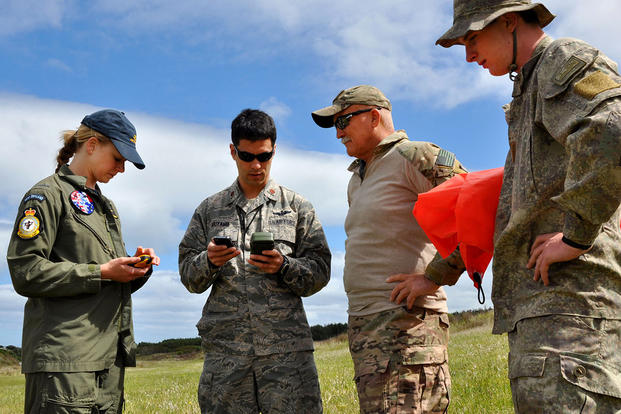SCOTT AIR FORCE BASE, Ill. — Ensuring the right supplies are dropped on time and on target is no easy feat, but this mission is critical when the package contains vital material for service members in austere locations.
For nearly 50 years Air Mobility Liaison Officers have been doing just that and by doing so they ensure warfighters have what they need to complete their mission.
AMLOs, who are made up of mobility pilots and navigators, are trained in airlift movement and integrate with the planning and execution phase of airdrop requests to advise.
AMLOS, who were first called Tactical Airlift Liaison Officers (TALOS), were created during the Vietnam War, according to an AMLO training course document provided by the Air Mobility Command Historian's Office. It was at this time the Air Force gained control of C-17 aircraft used for tactical airlift and the Army feared losing access to the theater airlift system.
In 1974, Military Airlift Command became the single managing source for strategic and tactical airlift, according to the document. TALO's primary responsibility became drop zone surveys, acting as drop zone control officers and affiliation training. Then, in 1992, when AMC activated, significant changes to the TALO career field began. Marine Expeditionary Force Liaison Officers and TALOS combined to create the AMLO career field. The training course also expanded from three to four weeks and relocated to what is known today as the U.S. Air Force Expeditionary Center.
"Since 1992, AMC has owned the AMLO career field and evolved it into a three year special duty assignment for pilots," said Air Force Lt. Col. Bryan Broekemeier, AMLO Functional Manager. "Today, there are 64 authorized AMLO positions in the Air Force; 53 are assigned to AMC, seven are assigned to Pacific Air Forces, and two are assigned to U.S. Air Forces in Europe."
The AMLO course teaches pilots and navigators how their airframe integrates in the system, about life cycle of requirements, their function at unit and command relationships, said Broekemeier.
"AMLOs who are successful are motived, creative, good communicators, trouble shooters and are usually an expert in one weapons system," he said. "When someone knows how the system is supposed to work, like a pilot, and what the user's requirements are, and is a good communicator, then the job can be done smarter."
Keeping their requestor's objective in mind, sometimes AMLOS have to make a judgement call that best suits their unit's needs. Think of them as a mobility translators for the U.S. military, they are well versed in multiple languages, in this circumstance they translate between the airlift crew transporting the supplies and the receiving customer they work for, the U.S. Army or U.S. Marine Corps.
Sometimes a requestor says what they think they want, for example they need 10 C-130H's to move 60 pallets but AMLOs are trained to know exactly what the user really needs for sufficient airlift. In this case, they would communicate to the requester that the mission can be done more efficiently by using eight C-130Js. AMLOs are trained to identify gaps in planning or execution phase and know how to adapt the right capability.
AMLOs have two primary roles, drop zone and landing zone control.
"When it comes to a drop zone mission we train AMLOs on how to get it done right the first time so we only have to put our assets at risk once to fly over the objective area," said Broekemeier, who is also a course instructor. "We want our crews to stay safe and the warfighters to get support."
Landing zone support is provided when an aircraft is required to land on a semi-improved airfield.
The liaisons know what parameters are acceptable, said Broekemeier. AMLOs teach Soldiers and Marines how to set up appropriate markings and air to ground communications to fill in tactical gaps to ensure mission success.
The only way for some bases in Afghanistan to received sustainment is by airdrop. For this reason it is the responsibility of an AMLO to teach Soldiers and Marines how to do landing zone and drop zone operations correctly prior to their deployment cycle.
"An AMLO is the most agile mobility asset AMC has because an AMLO can [move] in a short timeline, integrate with the users and communicate ground truth back to any planner in the AOC, action officer in the NAF or command," said Broekemeier. "When you do good planning the system can be more responsive. Really putting Rapid in Rapid Global Mobility."



























